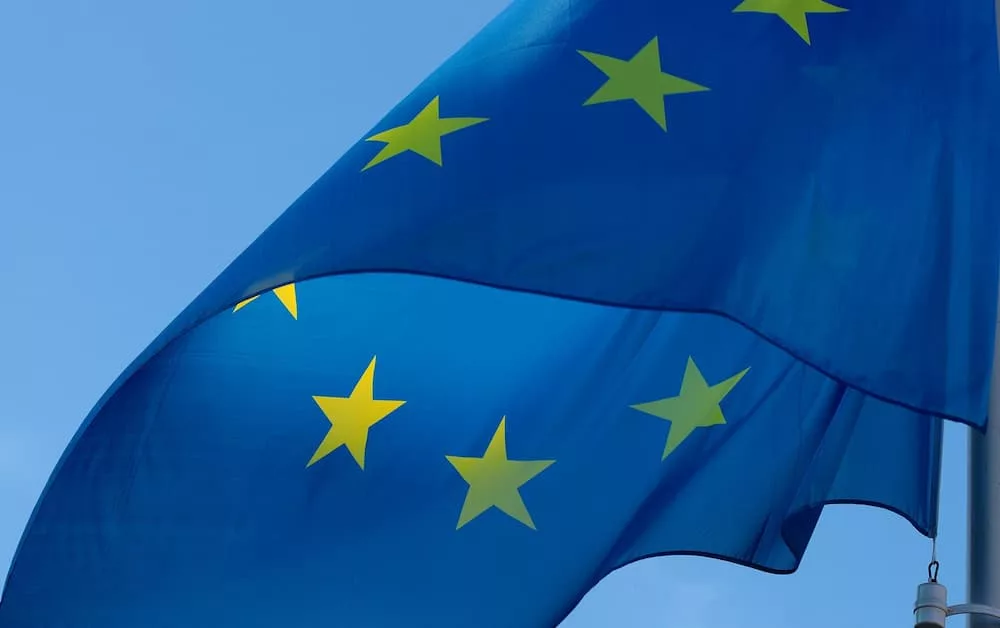Introduction
In the digital age, where vast amounts of personal data are collected and processed daily, data privacy has emerged as a paramount concern for individuals and organizations. With the ever-increasing sophistication of technology and the growing interconnectedness of global markets, safeguarding sensitive information has become imperative to protect individuals’ rights and maintain trust in the digital ecosystem.
One of the most prominent and far-reaching data privacy regulations is the General Data Protection Regulation (GDPR), which came into effect in the European Union on May 25, 2018. Designed to grant individuals greater control over their personal data and harmonize data protection laws across EU member states, GDPR has ushered in a new era of data privacy compliance.
As we progress into 2023, the landscape of data privacy laws in the United States is experiencing significant transformations, with several states taking inspiration from GDPR and enacting their own comprehensive data privacy regulations. These updates signal a shift towards a “rights-based” approach, emphasizing the protection of sensitive personal information and granting individuals greater autonomy over their data.
This article delves into the new updates for 2023 GDPR compliance in the U.S., exploring how various states are embracing this rights-based perspective and how businesses must adapt to the changing regulatory landscape. We will examine the implications of the GDPR Adequacy Decision for the EU-US Data Privacy Framework and how it affects data transfers between the two regions.
Shift to a rights-based approach
The shift from a harms-prevention-based approach to a rights-based comprehensive data privacy law approach is a fundamental change in the U.S. data privacy landscape. States like California, Colorado, Connecticut, Utah, and Virginia are leading the charge by introducing statutes that treat personal information as a fundamental right owned by individuals. This new perspective reflects the EU’s long-standing belief that data privacy is a human right, influenced by past data collection abuses.
New comprehensive data privacy laws
In the absence of a federal-level comprehensive data protection law, states are stepping up to introduce their own data privacy regulations. Some of the significant consumer data privacy laws that came or will come into effect in 2023 include:
California Privacy Rights Act (CPRA): Building on the California Consumer Privacy Act (CCPA), CPRA expands consumer rights and imposes additional obligations on businesses, including those involved in targeted advertising and processing sensitive personal data.
Virginia Consumer Data Protection Act (VCDPA): Virginia has enacted the VCDPA, which grants consumers the right to access, correct, delete, and obtain a copy of their personal data held by businesses.
Colorado Privacy Act (CPA): The CPA requires businesses to conduct data protection assessments when processing personal data, and it empowers consumers to exercise certain rights concerning their data.
Connecticut Data Privacy Act (CTDPA): Connecticut’s privacy act aims to strengthen data privacy practices and obligates businesses to conduct risk assessments and implement security measures to protect sensitive data.
Utah Consumer Privacy Act (UCPA): Utah is also implementing its own data privacy law, granting consumers opt-out rights and requiring businesses to provide privacy notices detailing data collection and processing practices.

GDPR Adequacy Decision for EU-US Data Privacy Framework
The EU-US Data Privacy Framework received a significant boost with the adoption of the GDPR Adequacy Decision on July 10, 2023. This decision, based on Article 45 of the General Data Protection Regulation (GDPR), establishes that the United States now provides an adequate level of data protection for personal data transferred from the European Union to US companies.
Background
Before this decision, data transfers between the EU and the US faced uncertainties due to concerns about the level of data protection offered by US laws and practices. The EU had imposed restrictions on the transfer of personal data to countries lacking sufficient data protection standards, and the US required additional safeguards like Standard Contractual Clauses (SCCs) or Binding Corporate Rules (BCRs) to ensure adequate protection.
Impact of the decision
With the GDPR Adequacy Decision in place, personal data can now flow freely between the EU and the US without the need for additional safeguards such as SCCs or BCRs, which were previously required to meet GDPR compliance. This streamlining of data transfers removes barriers that hinder the exchange of data between organizations in both regions.
Compliance with GDPR rules
It’s crucial to understand that even with the adequacy decision, GDPR rules and principles continue to apply to data transfers between the EU and the US. US organizations receiving personal data from the EU must adhere to the GDPR’s stringent requirements for data processing, data protection, and individual rights. The decision does not exempt US companies from their obligations under GDPR when processing the personal data of EU citizens.
Self-certification under the new framework
To facilitate compliance, the new data privacy framework allows US organizations to self-certify their adherence to specific privacy principles and regulations. By self-certifying, businesses demonstrate their commitment to complying with the adequacy decision and ensuring the protection of personal data transferred from the EU. This self-certification process may involve demonstrating compliance with specific requirements and maintaining transparency about data processing practices.
Consumer Trust and Privacy
Consumer trust is a key aspect affected by the adequacy decision. It assures EU citizens that their personal data enjoys the same level of protection in the US as it does within the EU, fostering confidence in cross-border data exchanges. For businesses operating across borders, compliance with the adequacy decision helps build a reputation for respecting privacy rights and complying with international data protection standards.

Data Transfer Impact Assessments (DTIAs)
In the wake of the GDPR Adequacy Decision for the EU-US Data Privacy Framework, which enables the free flow of personal data between the European Union and the United States, the importance of safeguarding data privacy and security during cross-border transfers becomes paramount. While the decision streamlines data transfers, it does not undermine the need for robust data protection measures. Among these measures, Data Transfer Impact Assessments (DTIAs) play a crucial role in ensuring the privacy and security of sensitive information exchanged between jurisdictions.
Understanding DTIAs
A Data Transfer Impact Assessment (DTIA) is a comprehensive evaluation process undertaken by businesses engaged in cross-border data transfers. The purpose of DTIAs is to assess the potential risks and impacts of such data transfers on the privacy and security of the individuals’ personal data involved. DTIAs help organizations identify and mitigate potential vulnerabilities, ensuring compliance with data protection regulations and safeguarding individuals’ rights.
Importance of DTIAs in the GDPR context
Under the GDPR, businesses are required to demonstrate accountability and transparency in their data processing practices. When engaging in cross-border data transfers, organizations must consider the potential risks associated with the transfer, especially when sending personal data to countries outside the EU that may not have the same level of data protection regulations.
DTIAs play a significant role in fulfilling GDPR’s accountability principle. They provide organizations with an opportunity to assess the necessity and proportionality of data transfers, ensuring that such transfers align with the purposes for which the data was collected. By conducting a DTIA, businesses can demonstrate their commitment to respecting individuals’ privacy rights and complying with the GDPR’s data protection principles.
Identifying risks and mitigating vulnerabilities
During the DTIA process, businesses should assess various factors that might impact the privacy and security of the data being transferred. These factors may include:
Data security measures: Evaluating the adequacy of security measures in place to protect data during transit and storage.
Data minimization: Ensuring that only necessary and relevant data is transferred, reducing the risk of data exposure.
Third-party involvement: Assessing the involvement of third-party data processors and ensuring they adhere to GDPR requirements.
Jurisdictional differences: Identifying potential conflicts between the data protection laws of the transferring and receiving jurisdictions.
Individual rights: Assessing the potential impact on individuals’ rights, such as their right to access, rectification, and erasure of their personal data.
Based on the findings of the DTIA, organizations can implement appropriate measures to mitigate identified risks and ensure that data transfers align with privacy regulations.

The main differences between the GDPR and the U.S. data privacy laws
The U.S. data privacy laws differ from the EU’s General Data Protection Regulation (GDPR) in several key aspects:
Philosophy and approach: The fundamental difference lies in the philosophy and approach toward data privacy. The U.S. has traditionally followed a “harms-prevention-based” approach, where data privacy is viewed as a matter of preventing harm to individuals. On the other hand, the GDPR is based on a “rights-based” approach, treating data privacy as a fundamental human right, and emphasizing the ownership and control of personal data by individuals.
Scope and territorial applicability: While the GDPR applies to all individuals and entities processing data of EU citizens, the U.S. data privacy laws are more fragmented. There is no single comprehensive federal law governing data privacy; instead, a multitude of federal and state laws protect personal data, leading to variations in scope and applicability from state to state.
Consent and data processing: Under the GDPR, explicit and informed consent is required from individuals for the processing of their personal data. Individuals have the right to access their data, request corrections, and even request its deletion under certain circumstances. In the U.S., data processing practices may vary based on state laws, and consent requirements might not be as stringent.
Data Protection Officer (DPO) requirement: The GDPR mandates specific organizations to appoint a Data Protection Officer responsible for overseeing data protection practices. In the U.S., there is no federal requirement for a DPO, although some states may have specific provisions related to privacy officers or similar roles.
Enforcement and penalties: The enforcement mechanisms and penalties also differ. The GDPR empowers data protection authorities to impose significant fines, up to a maximum of 4% of a company’s global annual revenue, for non-compliance. In the U.S., enforcement is carried out by various regulatory bodies at the federal and state levels, and penalties may vary depending on the specific laws violated.
Individual rights and remedies: The GDPR grants individuals comprehensive rights over their personal data, such as the right to erasure, the right to data portability, and the right to be informed about data processing activities. While some U.S. state laws offer similar rights, the overall scope and extent of individual rights may not be as broad as under the GDPR.
Data transfer rules: The GDPR has strict rules regarding the transfer of personal data to countries outside the EU, ensuring that such transfers are made to jurisdictions with adequate data protection standards. The U.S. operates under its own mechanisms for data transfers, such as the Privacy Shield framework (though it was invalidated in 2020) and Standard Contractual Clauses.
Regulatory structure: In the EU, data protection is governed by a single regulation, the GDPR, applicable across all member states. In contrast, the U.S. has a more complex regulatory structure, with data privacy laws being a combination of federal and state legislation.
Conclusion
Data privacy is a critical component that companies must take seriously. With the evolving landscape of privacy regulations, businesses must adapt to the new rights-based approach that emphasizes individual control over personal data. In light of this, companies must prioritize the protection of sensitive information and take measures to safeguard it from potential threats. One such measure is conducting risk assessments to identify potential vulnerabilities and implementing comprehensive compliance programs to meet the requirements of the 2023 GDPR-inspired data privacy laws in the U.S. By doing so, businesses can ensure that they are operating safely and securely, protecting the interests of both their customers and themselves.




